Recent wildfires will have lasting effects on the landscape, and create a heightened risk of flooding for years to come. Locations that are downhill and downstream from burned areas are highly susceptible to Flash Flooding and Debris Flows, especially in and near steep terrain. In some areas, where the fire burned hot enough or long enough, soils develop a layer that actually repels water, like rain on pavement. Rainfall that would normally be absorbed by the forest canopy and loose tree litter and duff on the ground will instead quickly run off. Because of this, much less rainfall is required to produce a flash flood, and the potential for debris flows increases with the loss of plant material that holds the soil in place.A good rule of thumb is: "If you can look uphill from where you are and see a burnt-out area, you are at risk."
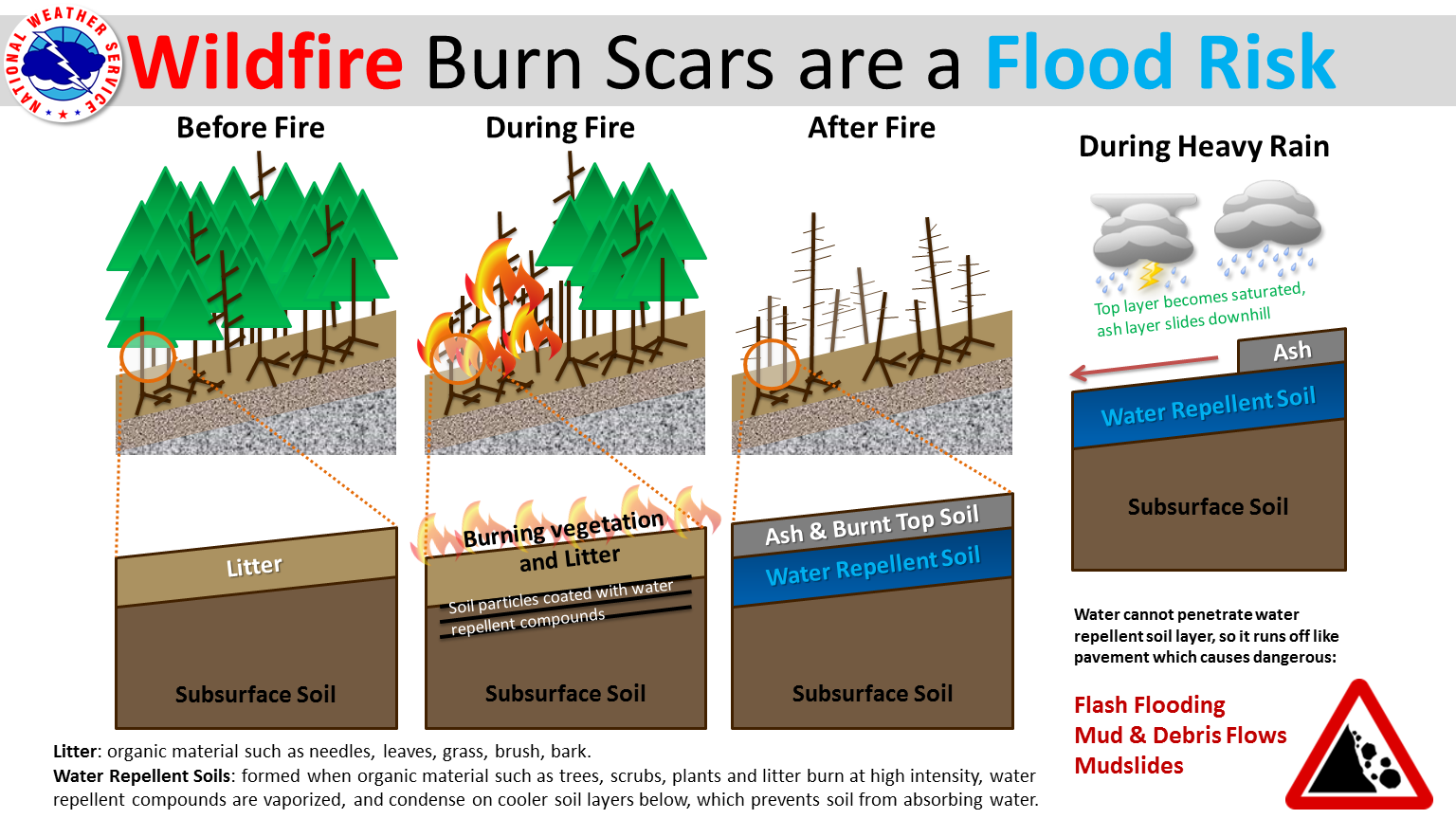
What is a debris flow?
Debris flows are fast-moving, deadly landslides. They are powerful mixtures of mud, rocks, boulders, entire trees - and sometimes, homes or vehicles. You'll often hear "debris flows" called "mudslides" or "mudflows". Many people use the terms interchangeably, but to scientists, each is a different kind of landslide and debris flows are the most powerful and dangerous of the three.
What causes a debris flow?
Debris flows occur most commonly during intense rain after wildfires. A debris flow doesn't need a long rain or a saturated slope. It can start on a dry slope after only a few minutes of intense rain.
"Intense” rain means a burst of rain at a fast rate, about half an inch in an hour. With debris flows, the rainfall rate matters more than total rainfall.
Why are debris flows so dangerous?
Debris flows are fast and unpredictable. They can travel faster than you can run - and they can catch up to your car! Also, no one can say precisely where a debris flow will start or where it will go. It may begin in a stream channel, then jump out and spread through a neighborhood. A debris flow may happen where others have occurred, or in a place that has never seen one before.
Before the Flood
The best thing you can do is to have a plan to react to flash flooding and debris flows. Remember it will take much less rain than you are used to for flash flooding or debris flows, and they will happen very quickly. Plan your evacuation route, and if you have time, use it. Your best option may be to climb uphill to safety.
During the Flood
Monitor the weather. During a storm that could cause a landslide, stay alert and awake. Many deaths from landslides occur while people are sleeping. Be ready to move if a warning is issued or if you see flooding or debris flows. Because the time between rainfall and flash flooding will be so short, you may not receive a warning.
Watch environmental cues. Know where your water comes from. Are there storm clouds upstream of you? It doesn't have to be raining at your location. Watch creeks and streams, and dry washes. Are normally dry areas filling with water? Are water levels rising or fluctuating? Fluctuating water levels can indicate a debris blocking water and then releasing upstream.
Be aware that by the time you are sure a debris flow is coming, that will be too late to get away safely. Never cross a road with water or mud flowing. Never cross a bridge if you see a flow approaching. It can grow faster and larger too quickly for you to escape. If you do get stuck in the path of a landslide move uphill as quickly as possible.
Debris Flow Warning Signs:
| Cameron Peak | East Troublesome | Williams Fork | Cal-Wood | Mullen |
|---|---|---|---|---|
| Post Fire BAER Report |
Post Fire BAER Report |
Post Fire BAER Report |
Post Fire BAER Report |
Post Fire BAER Report |
| Burn Severity Map (pdf) | Burn Severity Map (jpeg) | Burn Severity Map (pdf) | Burn Severity Map (pdf) | Burn Severity Map (pdf) |
| Debris Flow Map (pdf) | Debris Flow Map (pdf) | Debris Flow Map (pdf) | Debris Flow Map (pdf) | Debris Flow Map (pdf) |
| USGS Interactive Debris Flow Probability Map | USGS Interactive Debris Flow Probability Map | USGS Interactive Debris Flow Probability Map | USGS Interactive Debris Flow Probability Map | USGS Interactive Debris Flow Probability Map |
| Larimer County Recovery Resources | Grand County East Troublesome Info Grand County Watershed Recovery |
| 2024 Current Fire Perimeters from National Interagency Fire Center | |
|---|---|
| Additional Data: | NIFC Open Data Site |
| NWS Weather Forecast and Monitoring Information | |||
|---|---|---|---|
| NWS Denver/Boulder | Weather Story | Hazardous Weather Outlook | Area Forecast Discussion |
| Local State & Federal Emergency Management Links | ||
|---|---|---|
Outreach Materials
Be a message multiplier - use these materials in your social media feeds or on your web pages to help spread information on burn scar flash flooding and debris flows

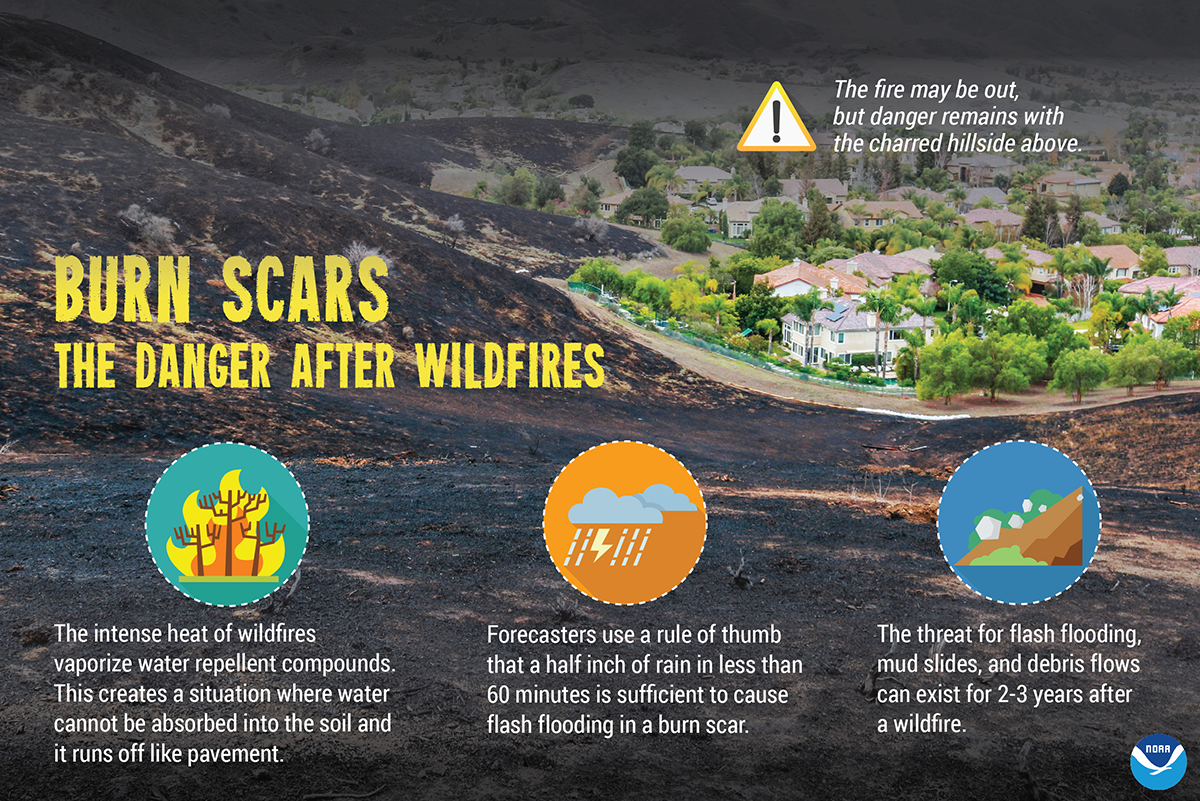 |
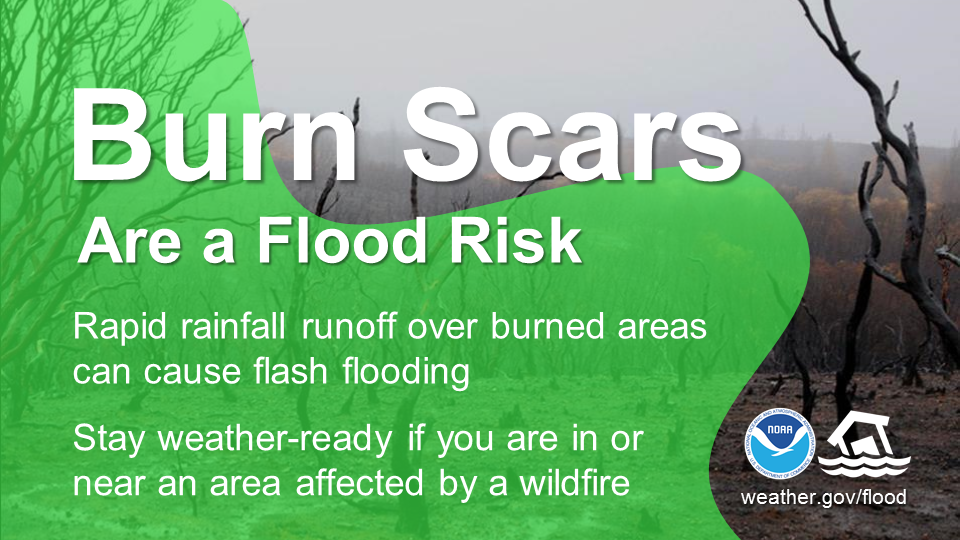 |
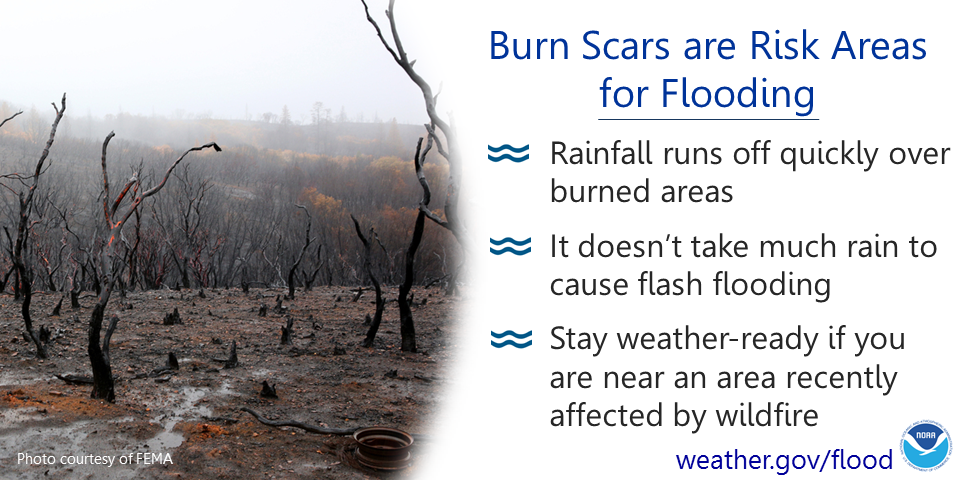 |
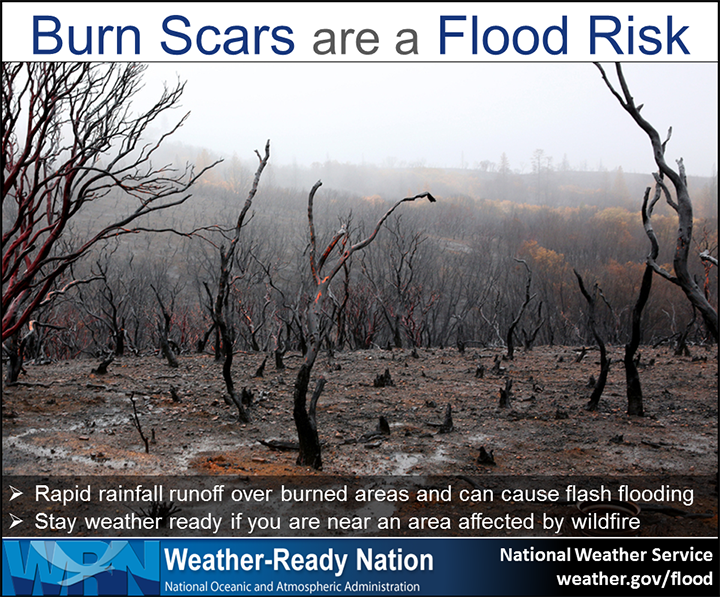 |
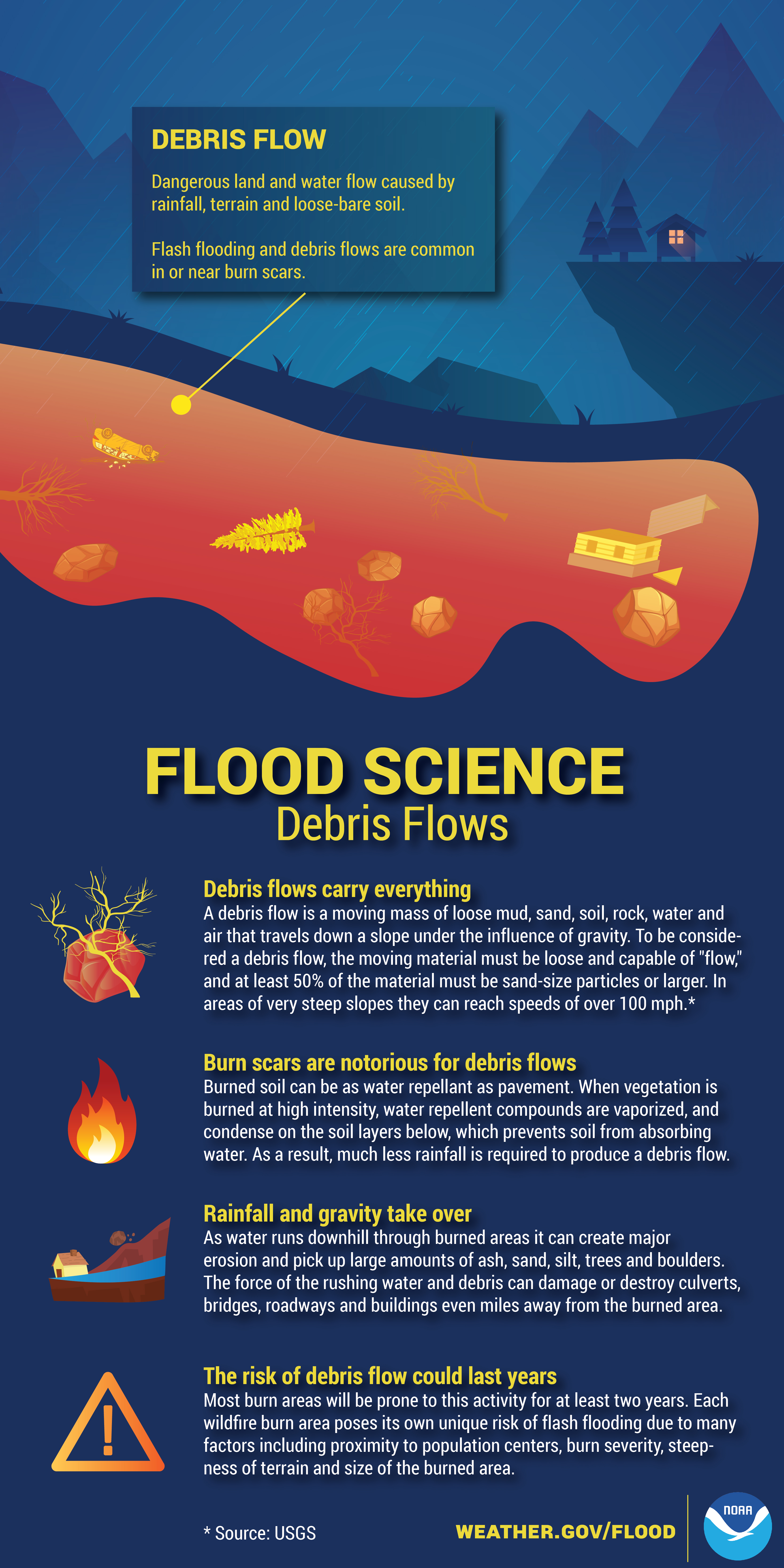 |
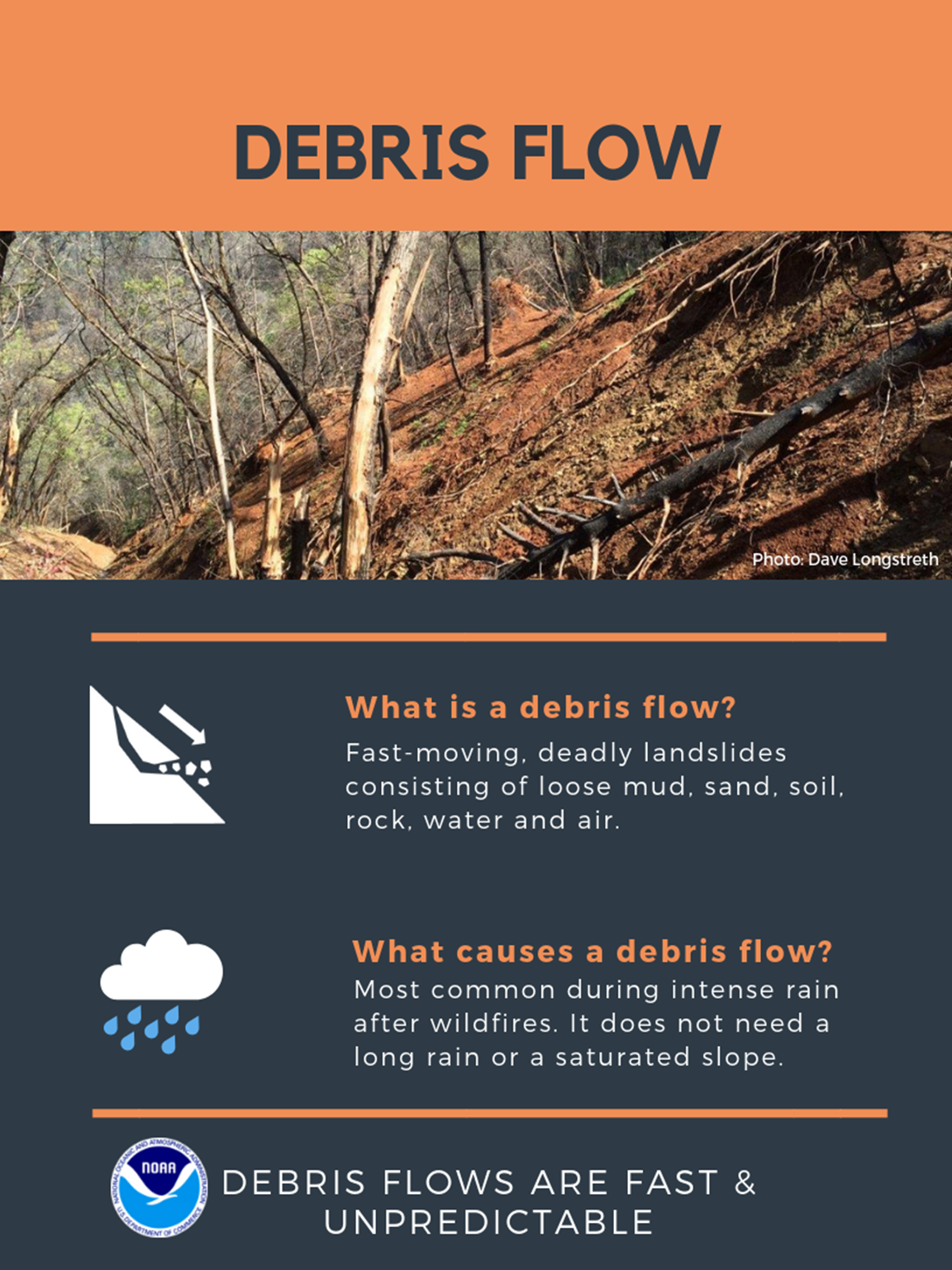 |
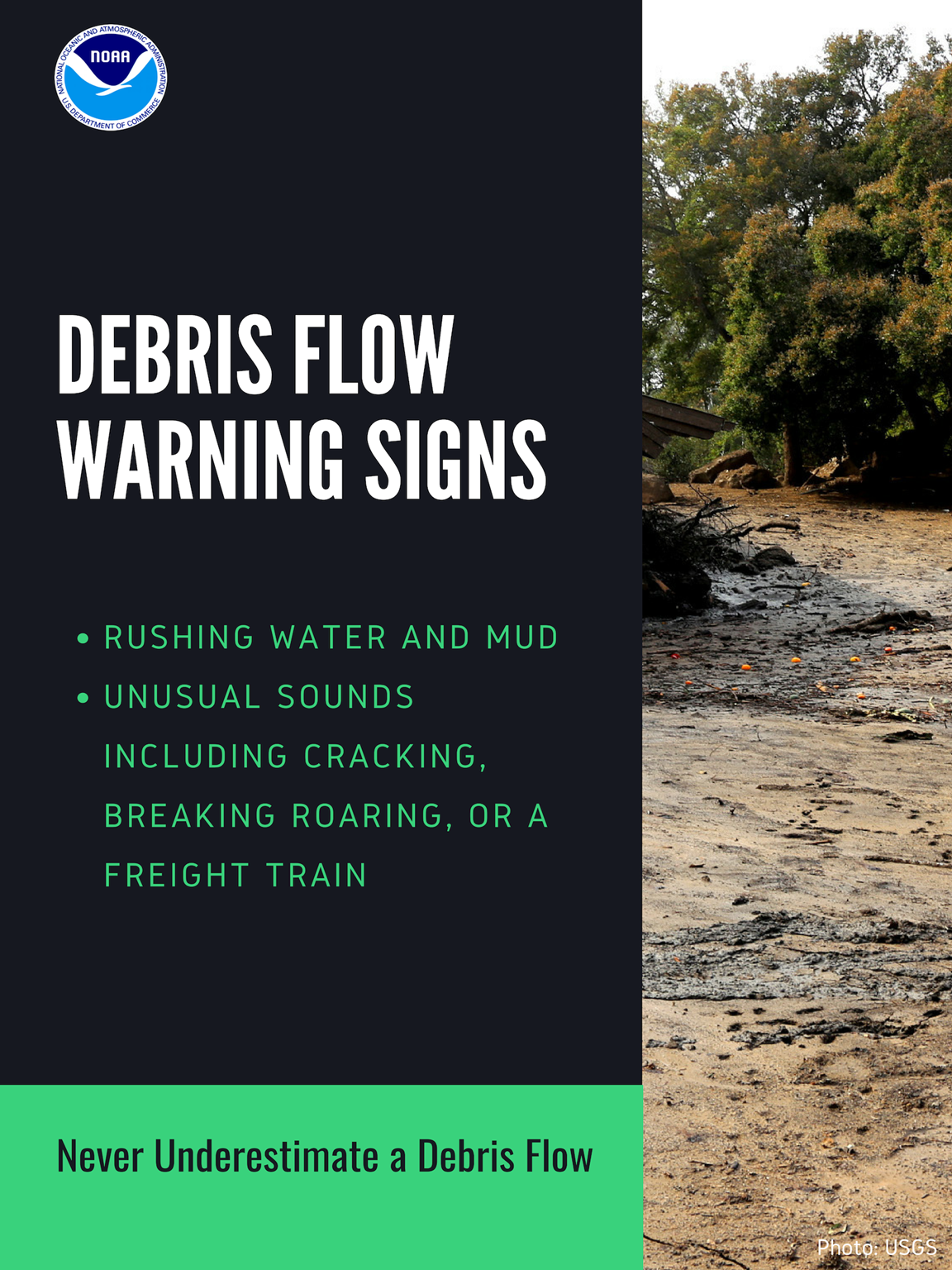 |
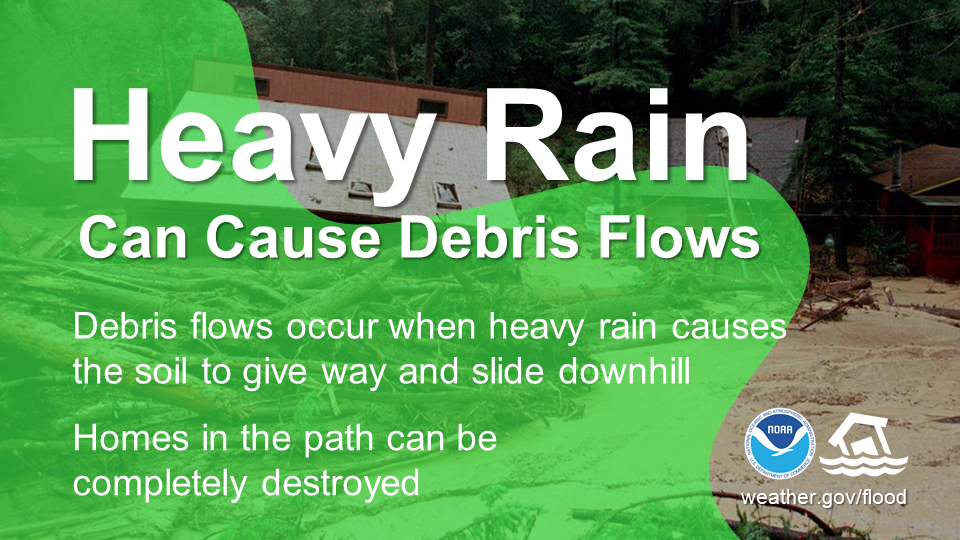 |
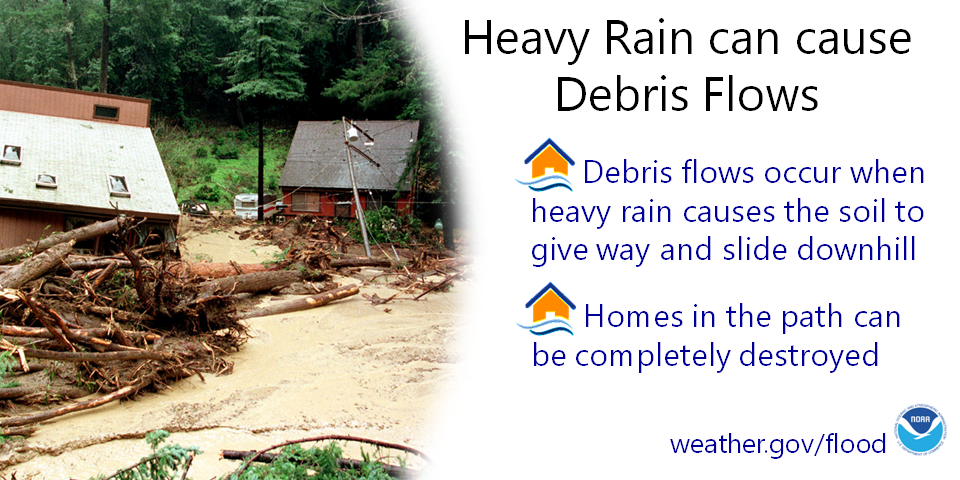 |
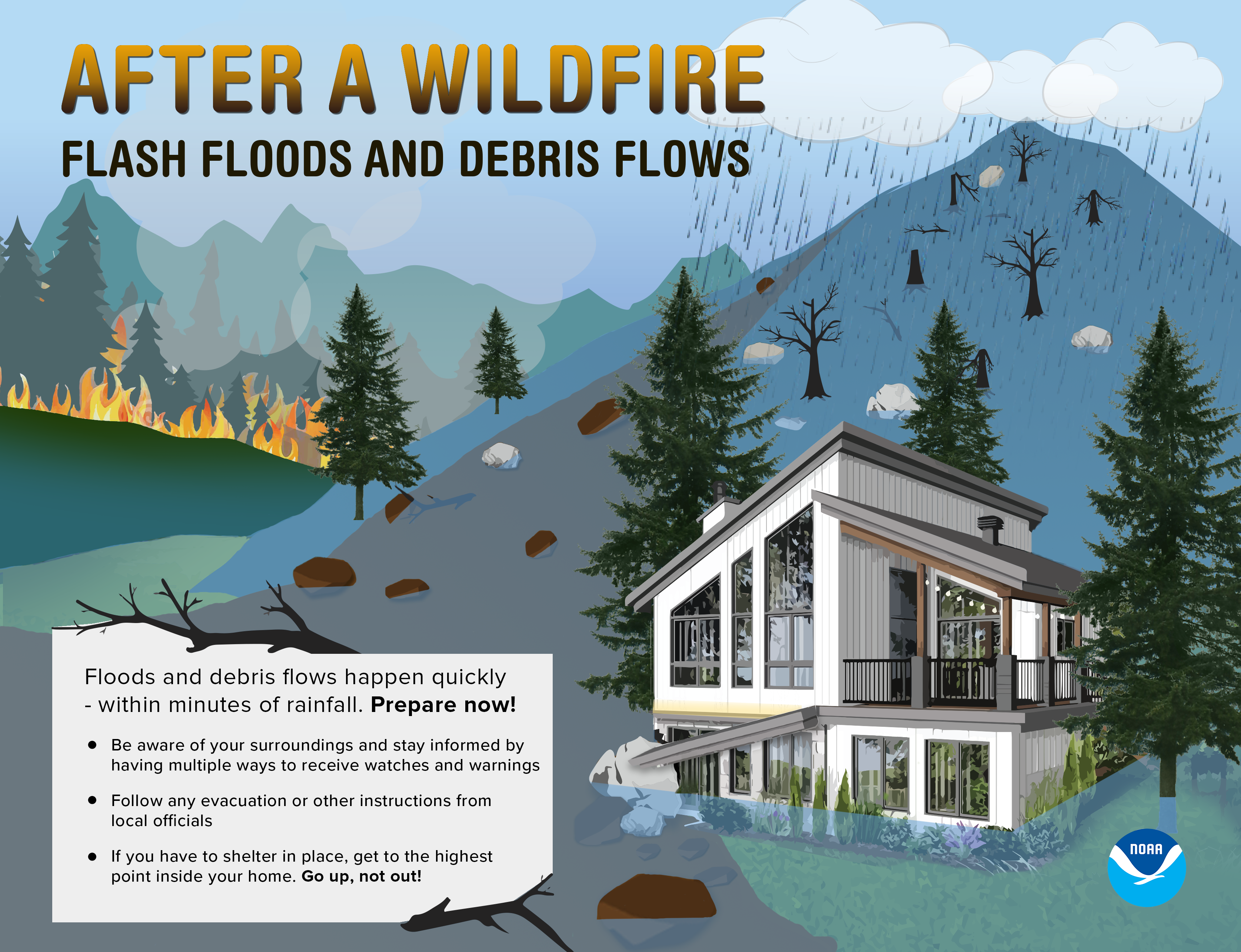 |
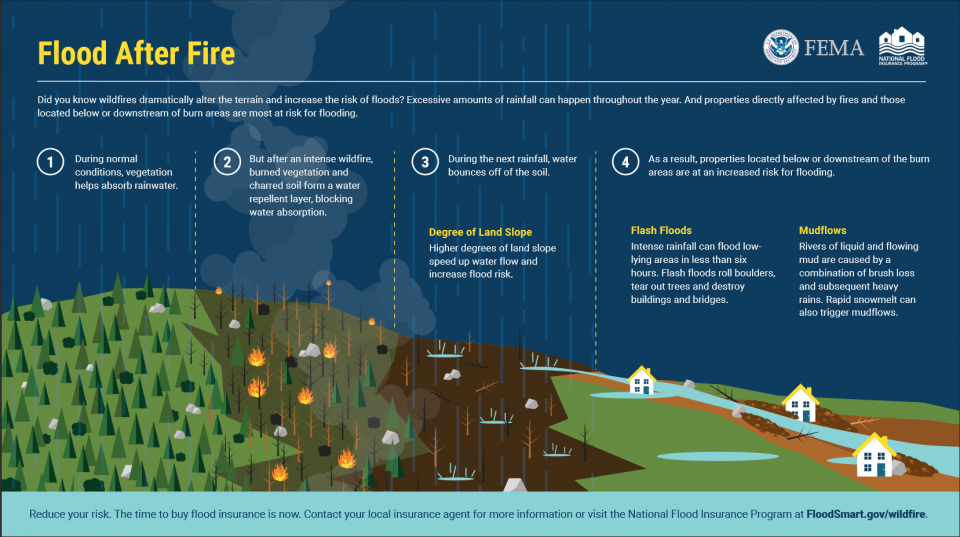 |
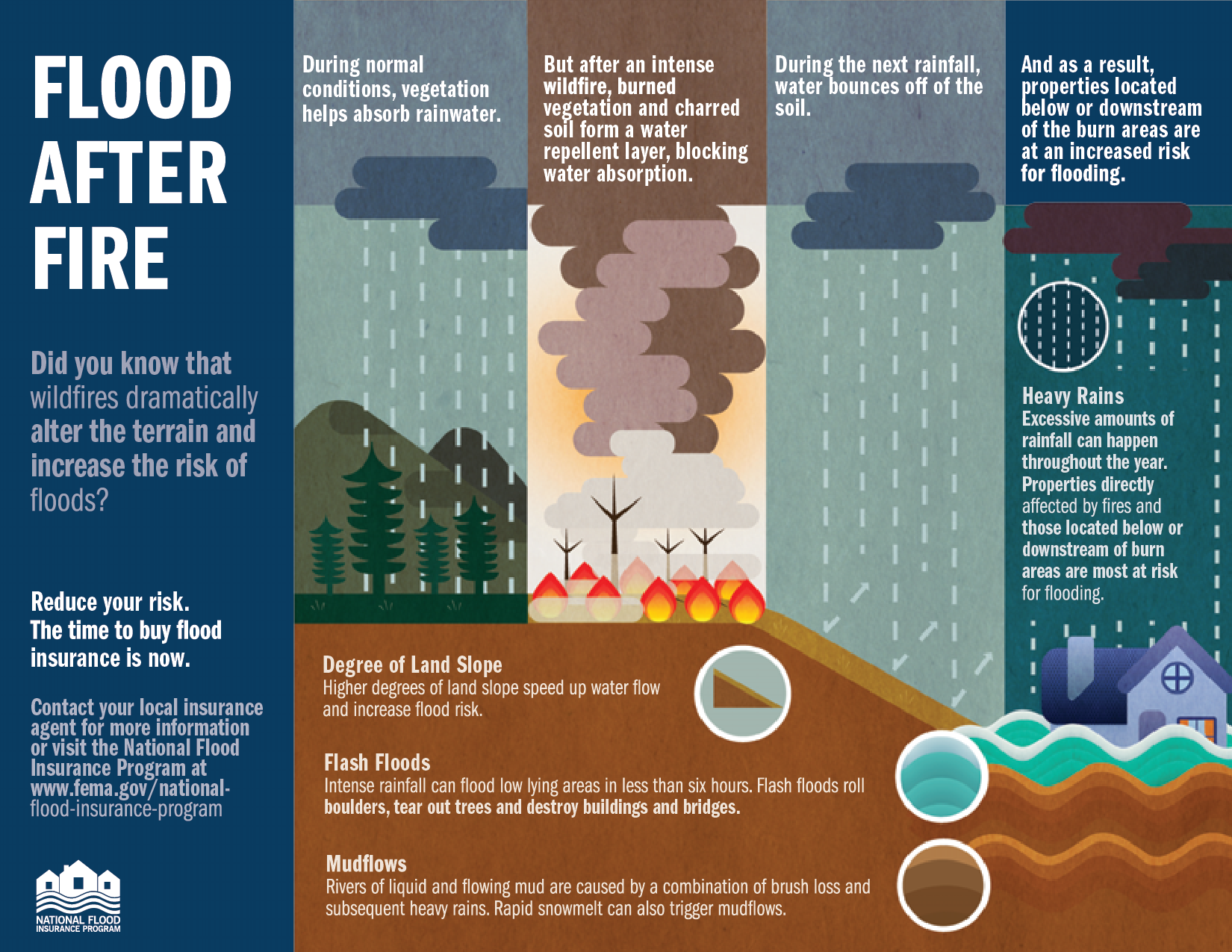 |
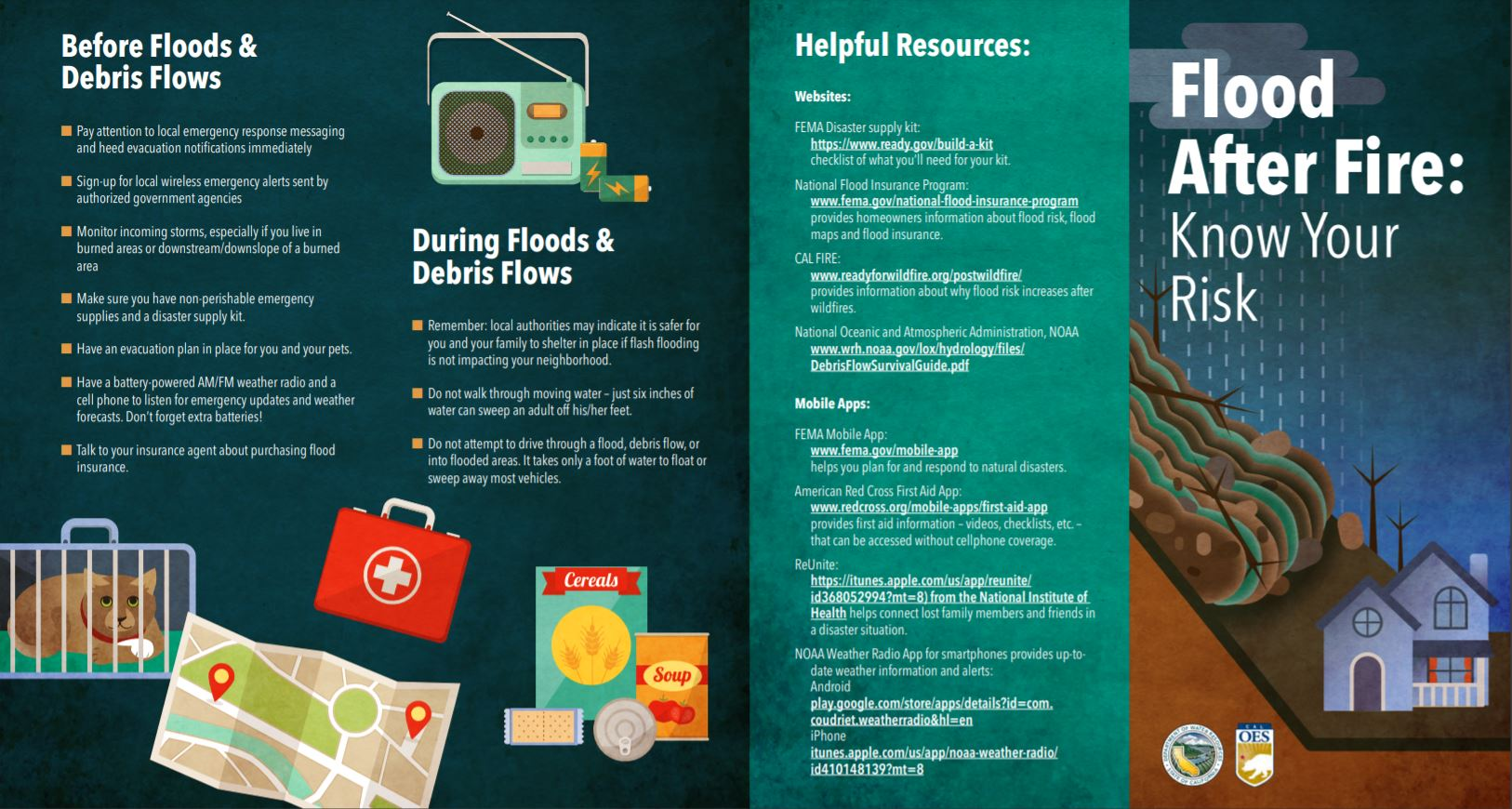 |
 |